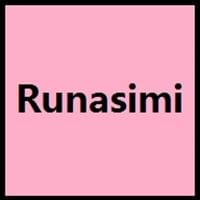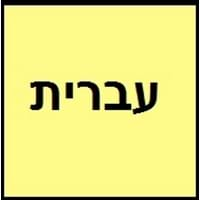Quechua and Hebrew
Countries
Argentina, Bolivia, Chile, Colombia, Ecuador, Peru
Israel
National Language
Bolivia, Ecuador, Peru
Israel
Second Language
Not spoken in any of the countries
Israel
Speaking Continents
South America
Africa, Asia, Europe
Minority Language
Not spoken in any of the countries
Poland
Regulated By
Not Available
Academy of the Hebrew Language
Interesting Facts
- One of the most widely spoken indigenous language in the America is Quechua.
- Quechua language has borrowed many words from Spanish.
- The original language of Bible is Hebrew.
- The men and women use different verbs in hebrew language.
Similar To
Not Available
Arabic and Aramaic languages
Derived From
Not Available
Aramaic Language
Alphabets in
Quechua-Alphabets.jpg#200
Hebrew-Alphabets.jpg#200
Writing Direction
Not Available
Right-To-Left, Horizontal
Language Levels
Not Available
Hello
Rimaykullayki
שלום (Shalom)
Thank You
Solpayki
תודה (Toda)
How Are You?
Allillanchu
מה שלומך? (ma shlomxa)
Good Night
Allin tuta
לילה טוב (Laila tov)
Good Evening
Wuynas nuchis
ערב טוב (Erev tov)
Good Afternoon
Wuynas tardis
אחר צהריים טובים (Achar tzahara'im tovim)
Good Morning
Wuynus diyas
בוקר טוב (Boker tov)
Please
Not Available
בבקשה (bevekshah)
Sorry
Pampachaykuway
סליחה! (Slicha)
Bye
bye
להתראות (Lehitraot)
I Love You
Kuyayki
אני אוהבת אותך (Ani ohevet otcha)
Excuse Me
Pampachaway
בבקשה!
Dialect 1
Ancash
Ashkenazi Hebrew
Where They Speak
Peru
Israel
How Many People Speak
Not Available
Dialect 2
Huánuco
Samaritan Hebrew
Where They Speak
Peru
Israel, Palestine
How Many People Speak
Not Available
Dialect 3
Yaru
Yemenite Hebrew
Where They Speak
Peru
Israel
How Many People Speak
Not Available
Speaking Population
Not Available
Second Language Speakers
Not Available
Native Name
Qhichwa
עברית / עִבְרִית (ivrit)
Alternative Names
North La Paz Quechua
Israeli, Ivrit
French Name
quechua
hébreu
German Name
Quechua-Sprache
Hebräisch
Pronunciation
Not Available
[(ʔ)ivˈʁit] - [(ʔ)ivˈɾit]
Ethnicity
Quechua
Not Available
Origin
16th Century
1000 BC
Language Family
Quechumaran Family
Afro-Asiatic Family
Subgroup
Andean Equatorial
Semitic
Branch
Not Available
Canaanitic
Early Forms
No early forms
Biblical Hebrew, Mishnaic Hebrew, Medieval Hebrew, Hebrew
Standard Forms
Quechua
Modern Hebrew
Language Position
Not Available
Signed Forms
Not Available
Signed Hebrew
Scope
Macrolanguage
Individual
ISO 639 6
Not Available
Not Available
Glottocode
quec1387
hebr1246
Linguasphere
No data Available
12-AAB-a
Language Type
Living
Living
Language Linguistic Typology
Not Available
Subject-Verb-Object, Verb-Subject-Object
Language Morphological Typology
Agglutinative, Synthetic
Fusional, Synthetic
All Quechua and Hebrew Dialects
Most languages have dialects where each dialect differ from other dialect with respect to grammar and vocabulary. Here you will get to know all Quechua and Hebrew dialects. Various dialects of Quechua and Hebrew language differ in their pronunciations and words. Dialects of Quechua are spoken in different Quechua Speaking Countries whereas Hebrew Dialects are spoken in different Hebrew speaking countries. Also the number of people speaking Quechua vs Hebrew Dialects varies from few thousands to many millions. Some of the Quechua dialects include: Ancash, Huánuco. Hebrew dialects include: Ashkenazi Hebrew , Samaritan Hebrew. Also learn about dialects in South American Languages and North American Languages.
Quechua and Hebrew Speaking population
Quechua and Hebrew speaking population is one of the factors based on which Quechua and Hebrew languages can be compared. The total count of Quechua and Hebrew Speaking population in percentage is also given. The percentage of people speaking Quechua language is 0.13 % whereas the percentage of people speaking Hebrew language is Not Available. When we compare the speaking population of any two languages we get to know which of two languages is more popular. Find more details about how many people speak Quechua and Hebrew on Quechua vs Hebrew where you will get native speakers, speaking population in percentage and native names.
Quechua and Hebrew Language Codes
Quechua and Hebrew language codes are used in those applications where using language names are tedious. Quechua and Hebrew Language Codes include all the international language codes, glottocodes and linguasphere.





